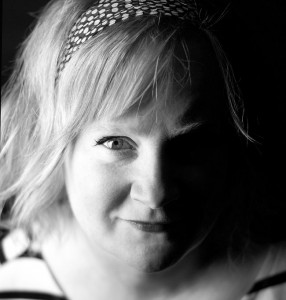Blog
Thievery: Unfashioned Creatures
 10th Apr 2014 in Guest Post, Thievery
10th Apr 2014 in Guest Post, Thievery
 Thievery is a series of blog posts about story inspirations.
Thievery is a series of blog posts about story inspirations.
On Thursdays, I invite my favourite writers to share the inspirations behind their stories. Here’s one from acclaimed Scottish novelist Lesley McDowell.
The Story:
Unfashioned Creatures was published by Saraband.
An Extract:
“‘Where did you get that dress?’
My pallet of clean bed linen smacks off the wooden floorboards. My arms, still curved, carry a phantom load.
‘I’ve asked you a question! Where did you get that dress?’
He’s been much worse in the days since Mary’s visit, as though he’s guessed the wickedness growing inside me that has my heart staggering back and forth like a drunk man. Solutions that once made me shudder have got wilder in my head, making a macabre kind of puzzle that should be unthinkable. Yes, how can you think it at all? But then my heart lurches again and I know I can. And his guessing only increases his descent into a place without reason. I am making him madder. ‘But thoughts of blood and endings and death will do that,’ I whisper as I creep about the cottage, trying to make myself invisible. Mariticide. I’ll be keeping them company in the underworld, I think, and I wonder about their daughters.”
The Inspiration:
The inspiration for my nineteenth-century look at madness and psychiatry came from a line in a letter written by Mary Shelley in 1823. I’d been reading her letters as part of research for something else, then I came across this sentence about a visit from a Scottish friend she hadn’t seen for some years: “I have now renewed my acquaintance with the friend of my girlish days…she has been ill a long time, even disturbed in her reason.”
I found that fascinating because the “acquaintance” she was talking about was Isabella Baxter Booth, and she was married to a man who did suffer bouts of madness all through his life. The extract above is a crucial moment that I try imagine in my novel that might have taken place in their marriage, before an act of violence is committed.
Isabella herself wasn’t mad – or was she? I thought of Henry James’s The Turn of the Screw and how we can’t tell if the governess is mad or really seeing ghosts – who’s to say what madness is and what it isn’t? I started to research it a little bit, then got sucked into the whole thing. The early nineteenth century was the start of psychiatry, a time when they really thought they could ‘cure’ madness. Some of their techniques aren’t so far from the ones we still use today.
I knew that when Mary Shelley wrote these words about Isabella, that Isabella herself would shortly leave her husband in London to return to Scotland. She’s in a state of “disturbed reason” as Mary says – so what happened to her when she went home? She must surely have considered whether she would ever return to him, wouldn’t she? I don’t know the answers to these questions though, so I decided to imagine.
Gaps in the story are essential if you want to write a historical novel – that’s where your imagination can take off. It doesn’t matter if what you imagine really happened to the person or not, even if they’re a real individual, as Isabella Baxter Booth was. All that matters is that the events are true to your story. My previous novel, The Picnic, about a grandmother who goes missing from a family picnic in Toronto in the early 1970s, is also about gaps. Absence, gaps, lack – they all speak to a psychological frame of mind, a psychological narrative, whether they’re set in the present, the recent past or the distant past.
I’ve been a fan of Joyce Carol Oates for a long time, and her books are so often about people who are missing, exploring the gaps they leave behind. It took me a while before I realised that’s what I liked so much about her writing, and even longer to realise that’s what I try to do in my own. Lack is about desire – erotic, familial, creative, whatever – and desire should make for a great narrative pull.
My next book is also historical, and also about gaps in the life of a real person, about what desire made her do once, and continues to make her do, even towards the end of her life. And it’s about what others desire from her, as they attempt to make her fill in those gaps. After all, isn’t that what stories are for, to fill in the gaps?
—
Get ‘Unfashioned Creatures’ from Saraband.

I love Unfashioned Creatures, just as i loved Between the Sheets and Picnic. Lesley’s prose is haunting and beautiful! She is never trite. In other words, she writes for serious readers. I cant say that of lots of published writers. Some time before reading Unfashioned Creatures i had read Faulks’ “Human Traces” , a striking affinity between both books. I suffered long periods myself when I would have been described as having “lost my reason”, which is not how i experienced myself. It is frightening to know how readily people have been committed – and still are – on the basis of others’ perceptions /denial of their own complexity/ whims. R D Laing eat your heart out! A brilliant brilliant book Lesley, and i look forward very much to your next one!